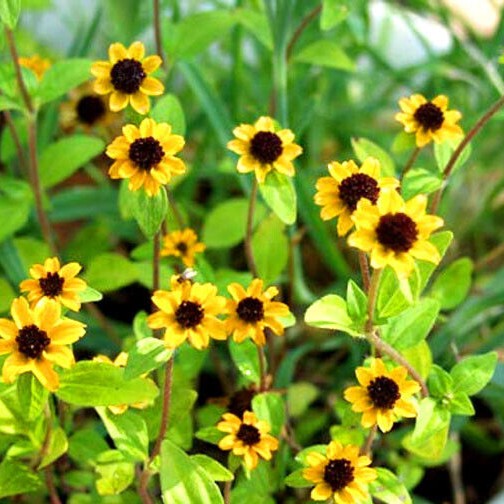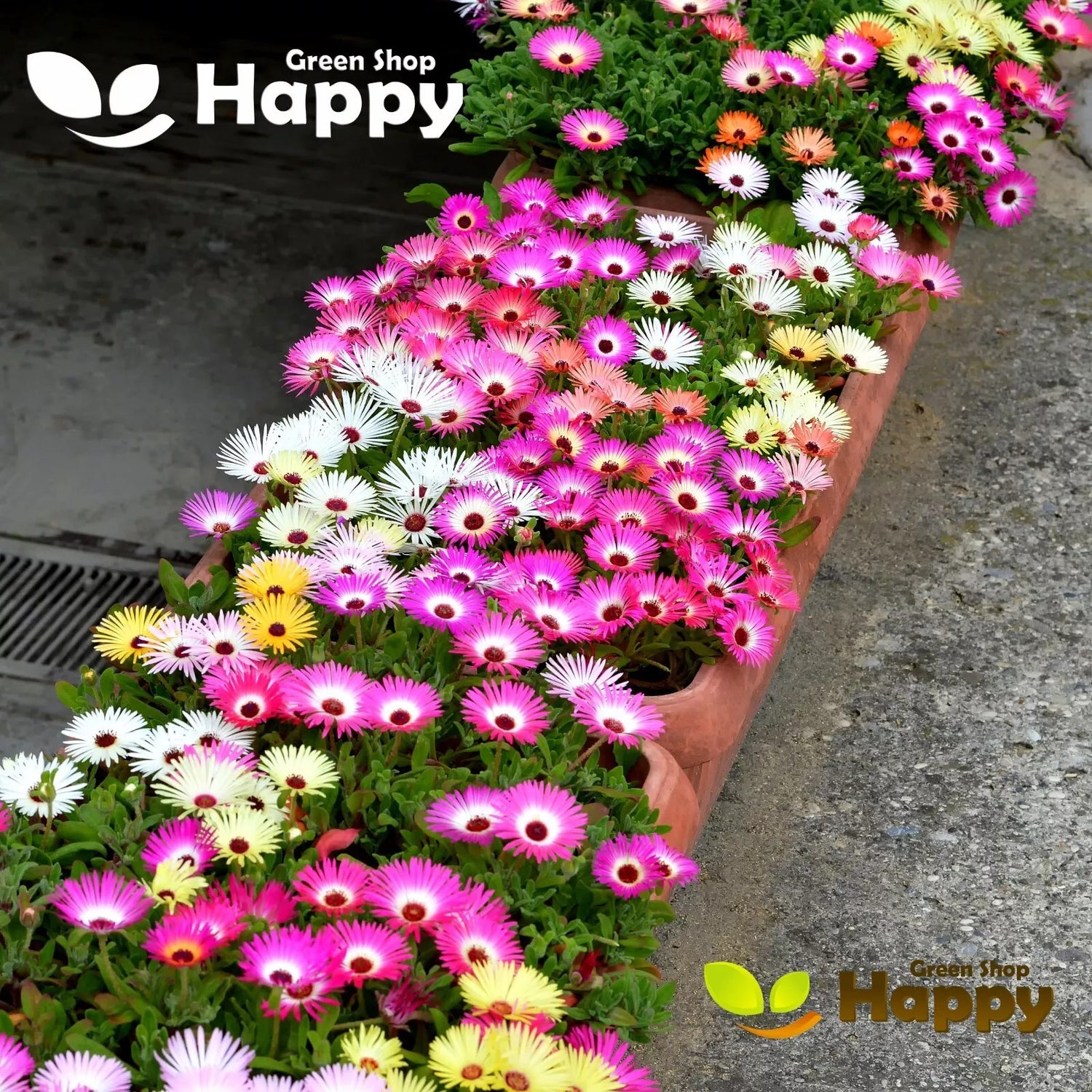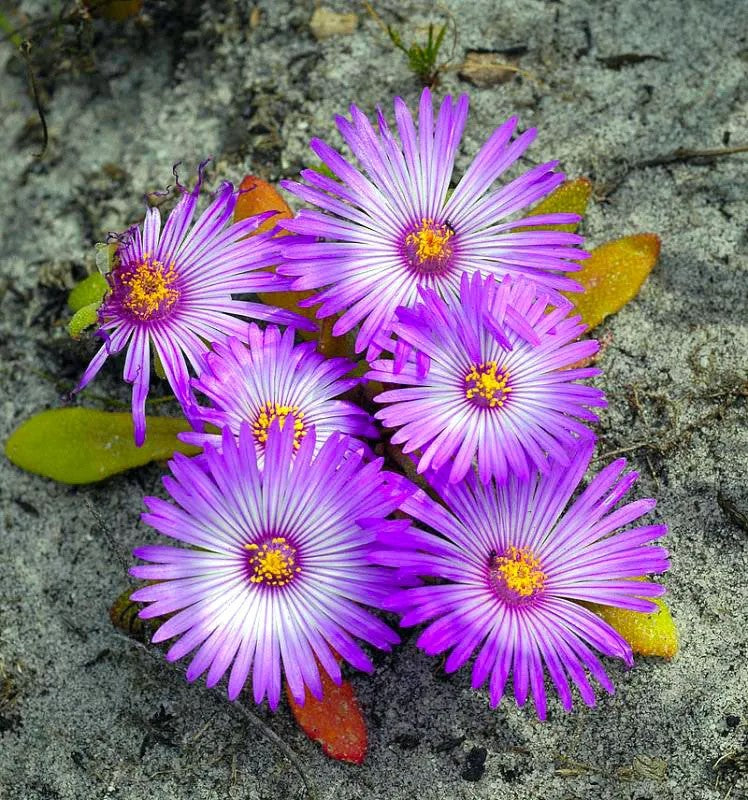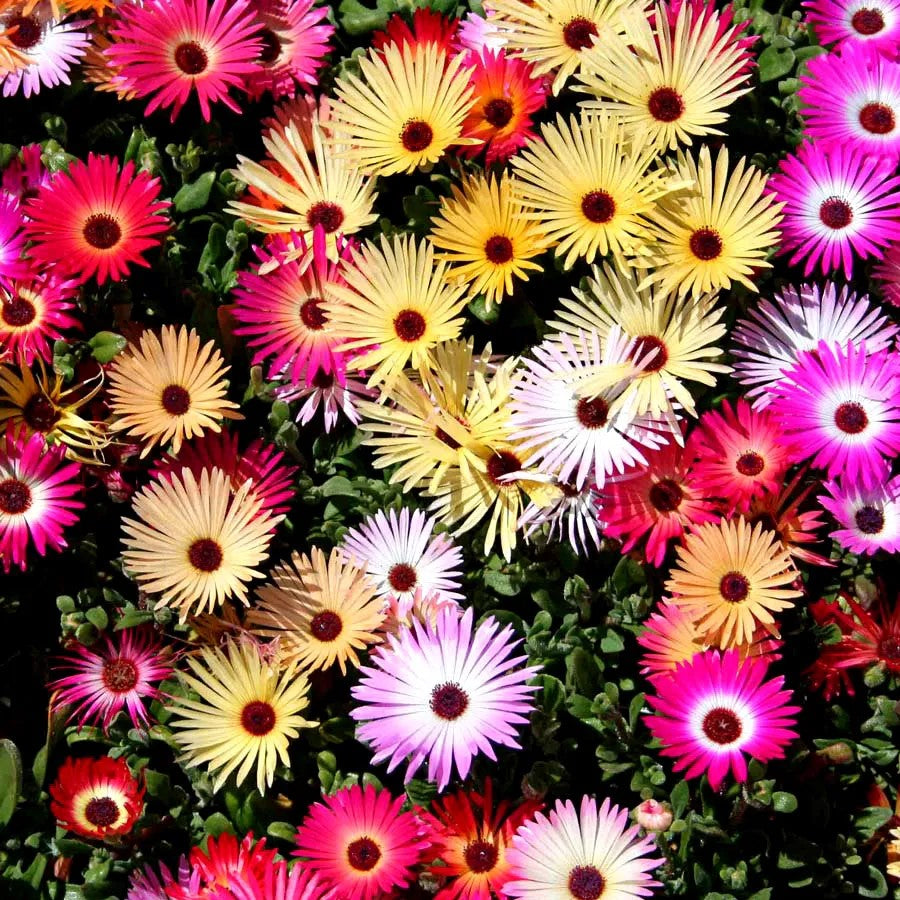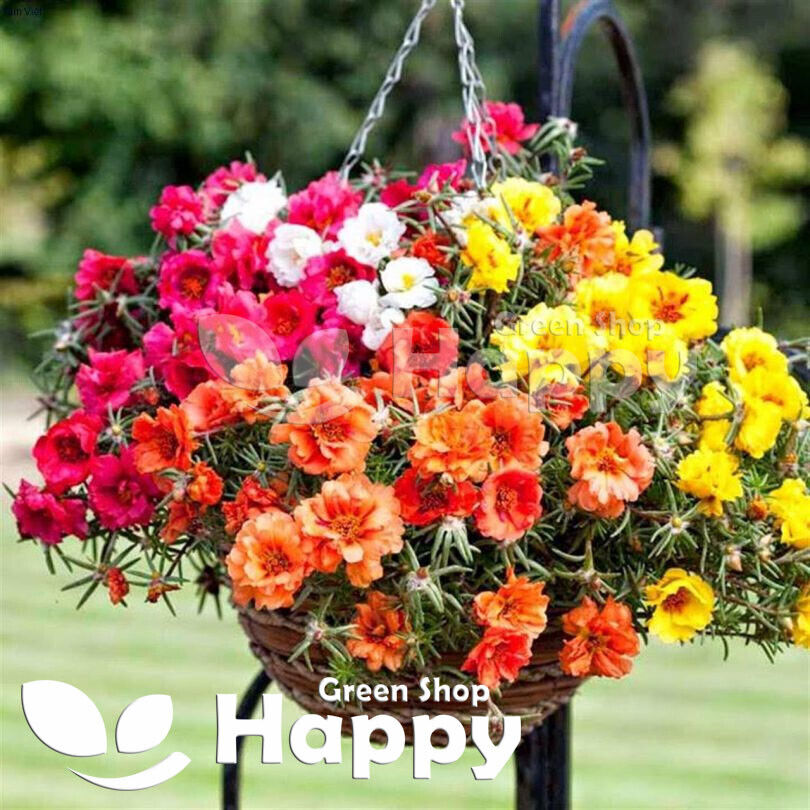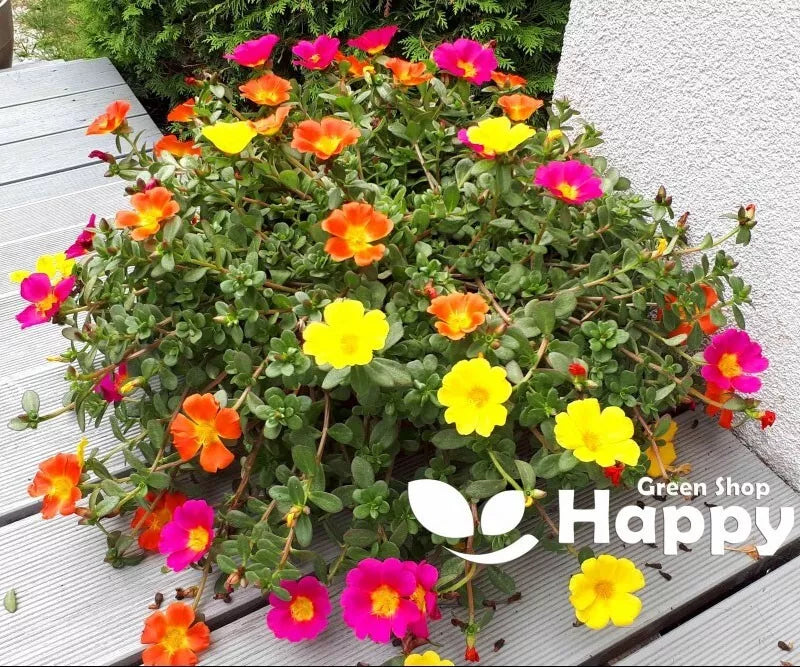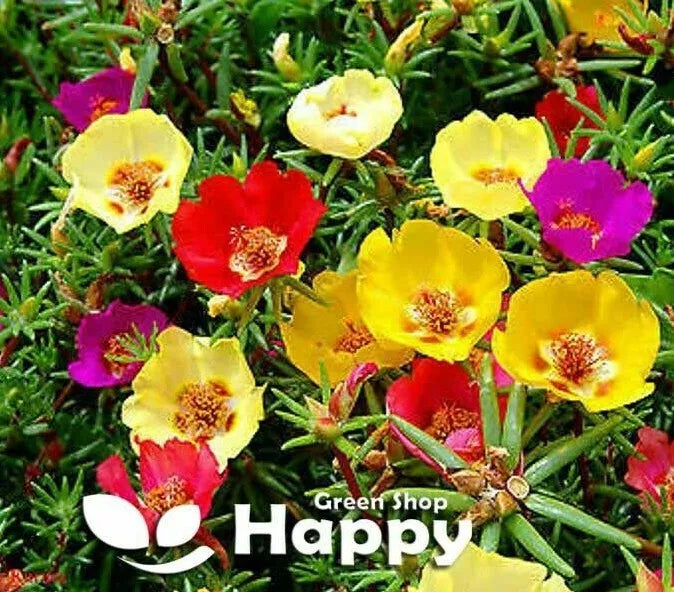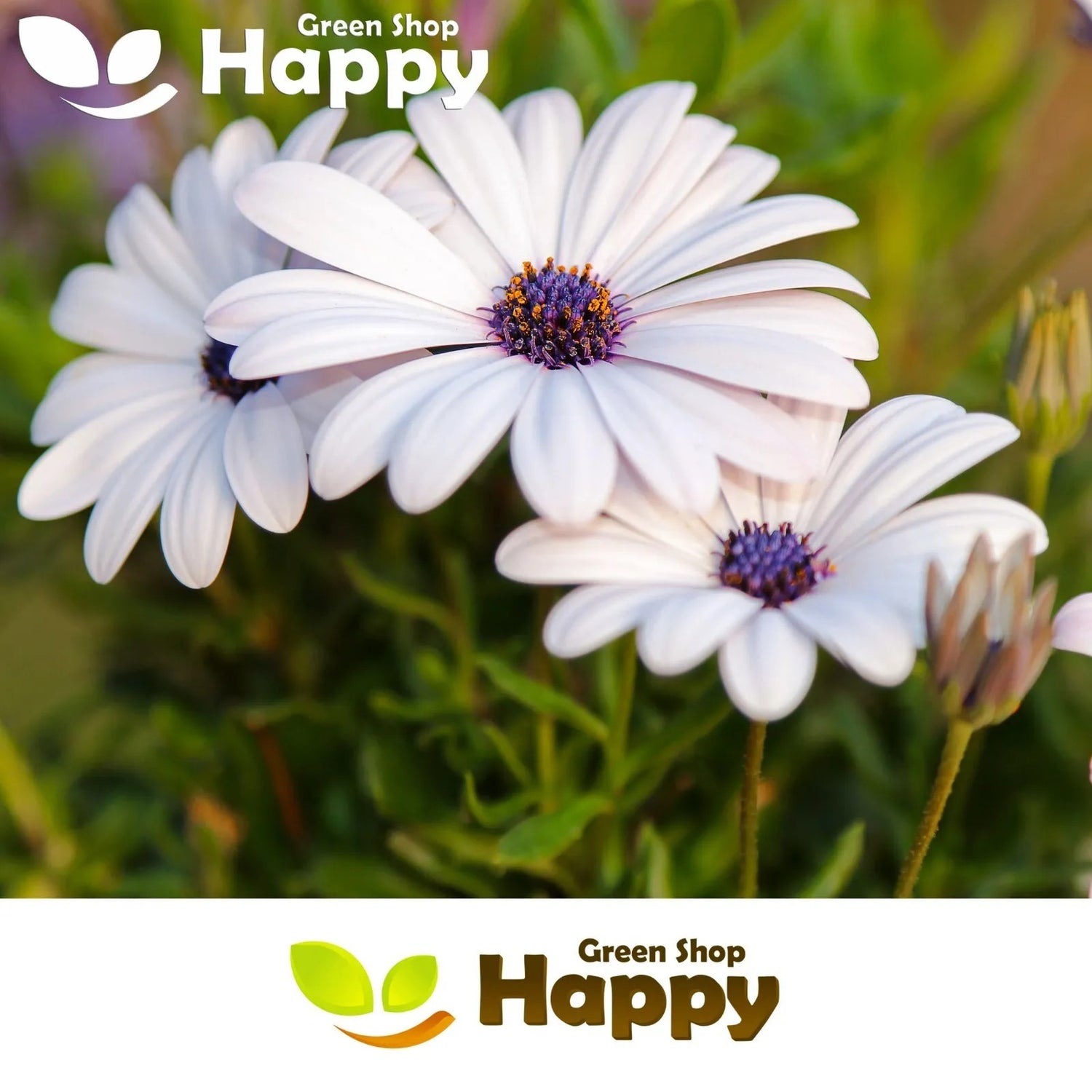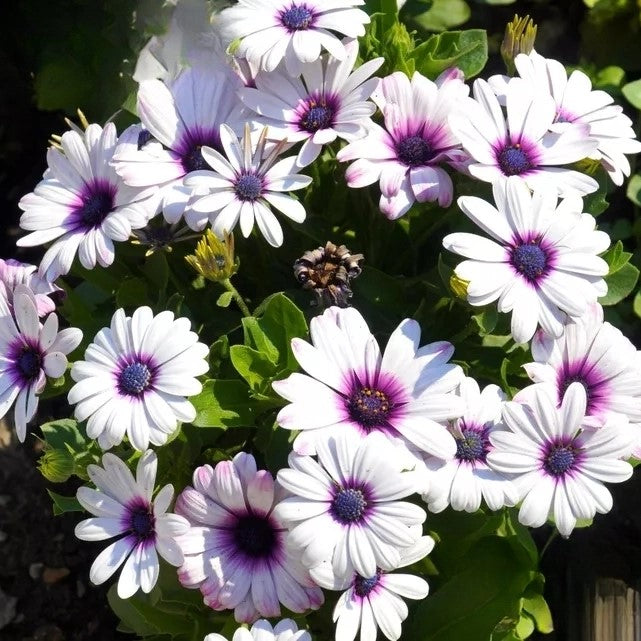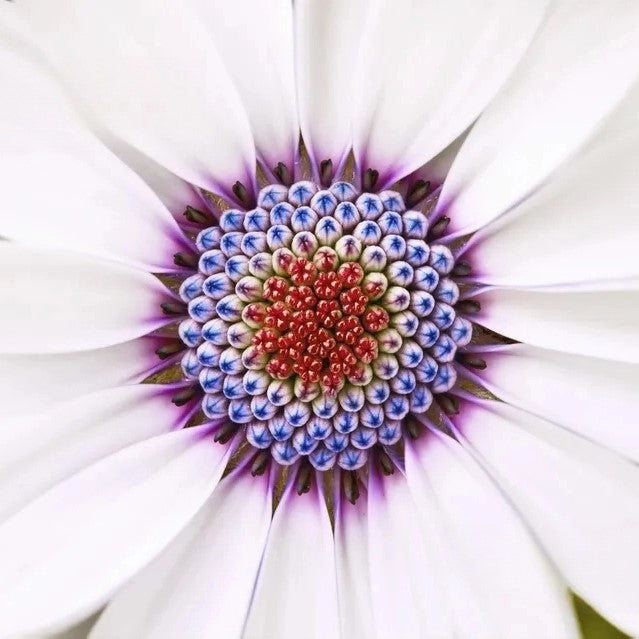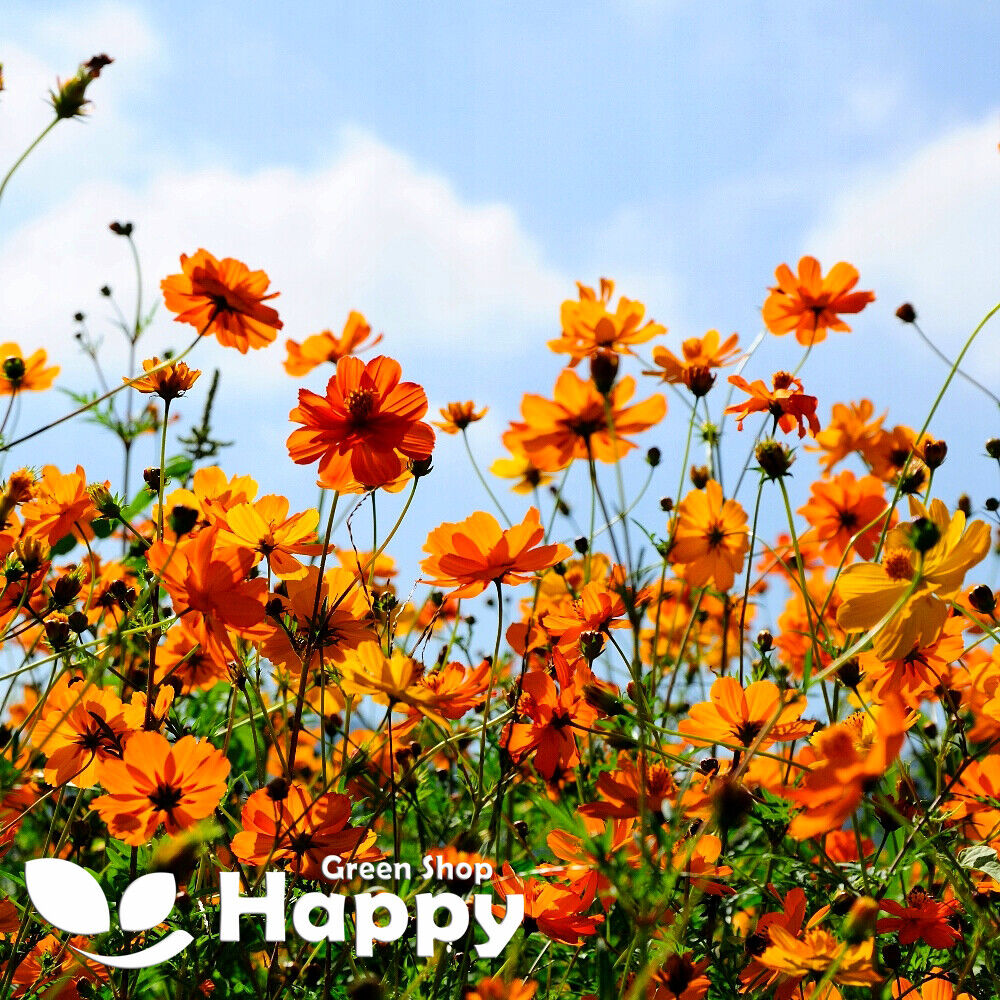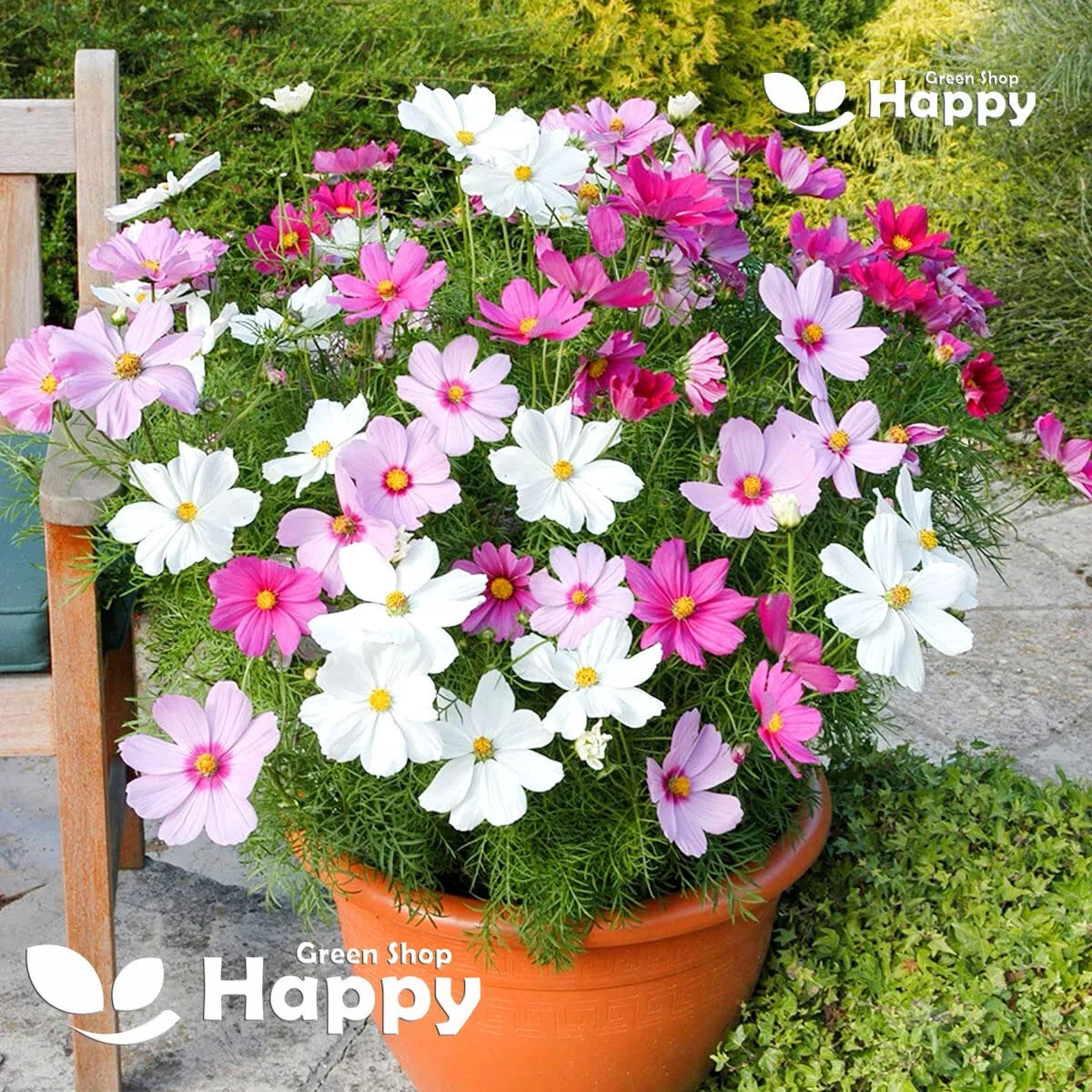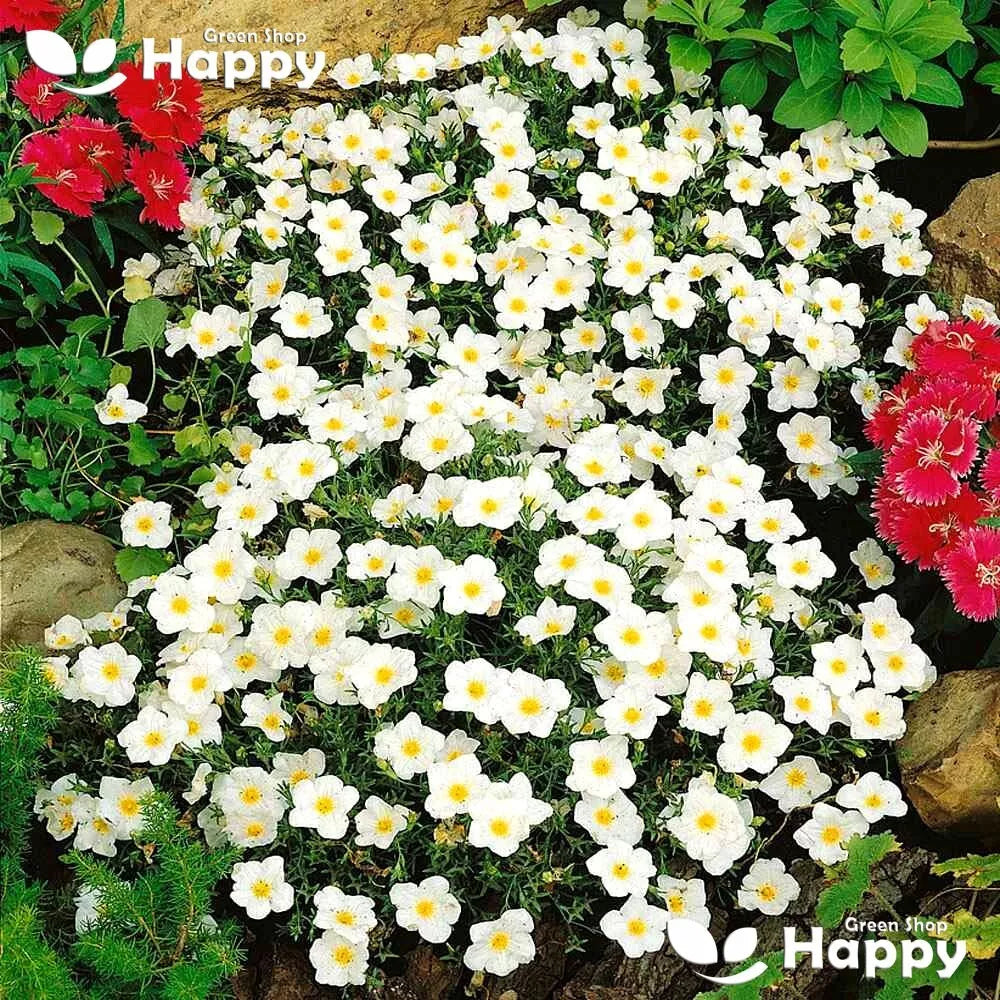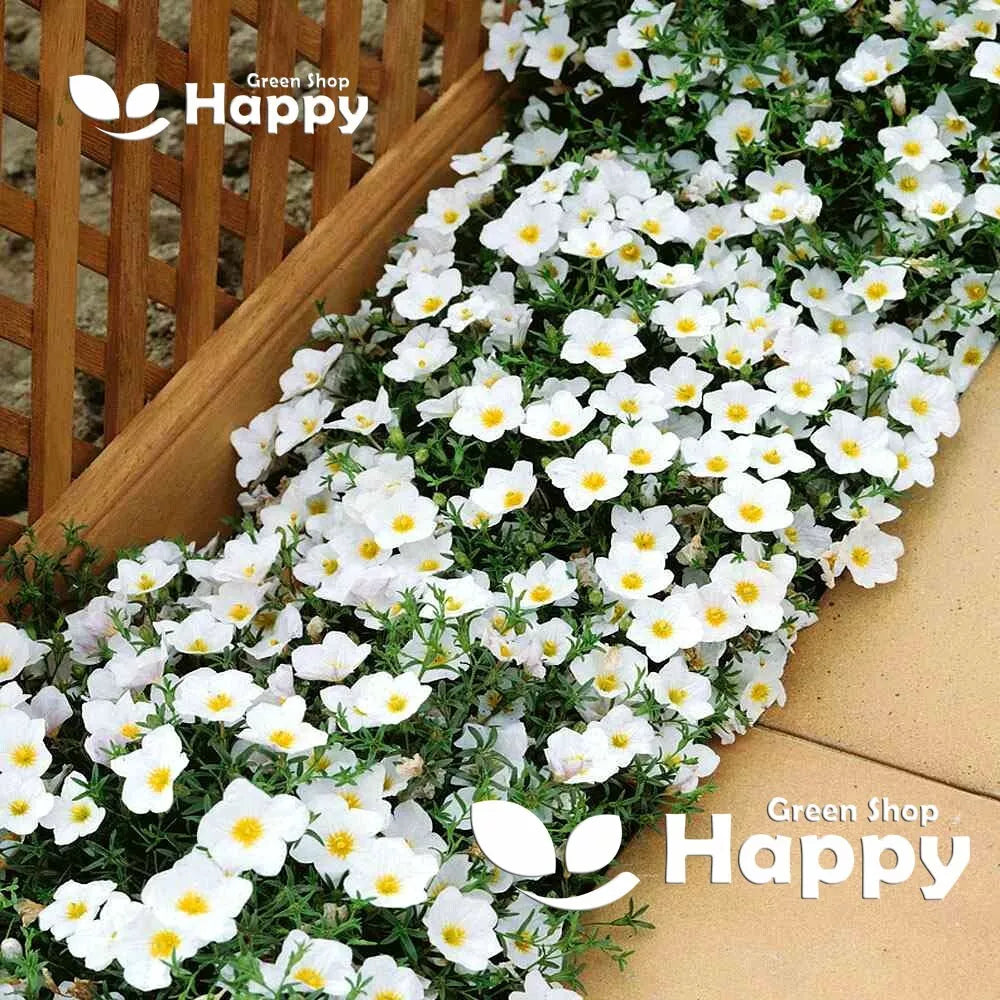Sort by:
211 products
211 products
Creeping Zinnia Seeds (Sanvitalia procumbens)
Creeping Zinnia is a charming, low-growing, trailing annual with masses of small, golden-yellow daisy-like blooms with dark centers. Perfect for ground cover, hanging baskets, containers, or edging garden beds, this hardy little flower provides a cheerful carpet of color all summer long.
What Makes It Special
-
Trailing, creeping habit – great for hanging baskets and ground cover
-
Produces hundreds of miniature sunflower-like blooms
-
Heat- and drought-tolerant once established
-
Long-lasting summer color with minimal care
Key Features
-
Botanical name: Sanvitalia procumbens
-
Common name: Creeping Zinnia
-
Seed count: Approx. seeds per pack
-
Height/Spread: 15–25 cm tall, spreading up to 30–40 cm
-
Position: Full sun; well-drained soil
-
Flowering period: June–October
Ideal For
-
Hanging baskets and containers
-
Rock gardens and edging borders
-
Ground cover in sunny beds
-
Adding bright, low-maintenance summer color
Sowing Instructions
-
When to sow: March–May indoors; May–June outdoors
-
How to sow:
-
Sow thinly on the surface of moist compost and cover lightly with fine soil or vermiculite
-
Keep at 18–22°C; germination takes 7–14 days
-
-
Transplanting: Prick out seedlings when large enough; plant outside after frost
-
Care: Prefers sunny, well-drained sites; water regularly until established; thrives in poor soils.
Rudbeckia 'Rustic Dwarf' Mixed Seeds (Rudbeckia hirta)
Rudbeckia 'Rustic Dwarf' Mixed is a compact, free-flowering variety producing a dazzling mix of warm autumnal colors including gold, mahogany, bronze, and red. Its large daisy-like flowers with dark central cones provide long-lasting color from summer into autumn and are loved by pollinators. Ideal for borders, containers, and cutting.
What Makes It Special
-
Compact dwarf habit – perfect for smaller gardens and pots
-
Fiery color blend that glows through summer and autumn
-
Easy to grow and low maintenance
-
Attracts bees and butterflies
Key Features
-
Botanical name: Rudbeckia hirta
-
Common name: Black-Eyed Susan
-
Seed count: Approx. seeds per pack
-
Height/Spread: 30–45 cm tall, bushy habit
-
Position: Full sun; well-drained soil
-
Flowering period: June–October
Ideal For
-
Brightening borders and bedding schemes
-
Patio pots and containers
-
Wildlife gardens and pollinator patches
-
Cut flower arrangements
Sowing Instructions
-
When to sow: February–April indoors; April–June outdoors
-
How to sow:
-
Sow on the surface of moist compost and cover very lightly with fine compost or vermiculite
-
Keep at 18–22°C; germination takes 7–21 days
-
-
Transplanting: Pot on seedlings when large enough; harden off before planting outside after frost
-
Care: Deadhead spent flowers to prolong blooming; water in dry spells.
Livingstone Daisy Mixed – Seeds (Dorotheanthus bellidiformis)
The Livingstone Daisy Mixed is a dazzling carpet-forming annual that produces masses of daisy-like blooms in vibrant shades of pink, red, orange, yellow, and white. The flowers open wide in full sunlight, creating a striking display over their low-growing, succulent foliage. Perfect for hot, dry, sunny spots, this cheerful mix brightens up any summer garden with its jewel-like colors.
What Makes It Special
-
Brilliant mix of jewel-toned daisy flowers
-
Thrives in poor, dry soils and full sun
-
Excellent ground cover for summer displays
-
Compact, trailing habit ideal for edging and containers
Key Features
-
Botanical name: Dorotheanthus bellidiformis
-
Common name: Livingstone Daisy / Ice Plant
-
Variety: Mixed colors
-
Seed count: Approx. seeds per pack
-
Height/Spread: 10–15 cm tall, spreading up to 20 cm
-
Position: Full sun; well-drained soil
-
Flowering period: Summer (June–September)
Ideal For
-
Bedding and edging
-
Rockeries and gravel gardens
-
Containers and window boxes
-
Drought-tolerant displays in sunny spots
Sowing Instructions
-
When to sow: February–April indoors, or May outdoors after frost
-
How to sow:
-
Sow seeds on the surface of fine, moist compost; do not cover (light aids germination)
-
Keep at 18–20°C; germination in 10–21 days
-
-
After germination:
-
Transplant seedlings when large enough to handle
-
Harden off and plant outdoors 10–15 cm apart in sunny, free-draining soil
-
Moss Rose Double – Seeds (Portulaca grandiflora)
The Moss Rose Double is a vibrant, sun-loving annual that produces rose-like double blooms in a brilliant mix of colors—pink, red, yellow, orange, and white. With its trailing habit and fleshy, succulent foliage, it is exceptionally drought-tolerant and easy to grow, making it ideal for containers, baskets, and rock gardens.
What Makes It Special
-
Striking double flowers with a rose-like form
-
Thrives in heat and poor, dry soils
-
Long flowering season through summer
-
Excellent for low-maintenance gardens
Key Features
-
Botanical name: Portulaca grandiflora
-
Variety: Moss Rose Double
-
Seed count: Approx. seeds per pack
-
Height/Spread: 10–15 cm tall, spreading to 30 cm
-
Position: Full sun; sandy, well-drained soil
-
Flowering period: Summer to early autumn
Ideal For
-
Hanging baskets and containers
-
Rock gardens and sunny borders
-
Ground cover in hot, dry spots
-
Colorful edging displays
Sowing Instructions
-
When to sow: March–May indoors or April–June outdoors after frost
-
How to sow:
-
Scatter seeds on the soil surface (light aids germination)
-
Press gently but do not cover deeply
-
Germination: 10–14 days
-
-
After germination:
-
Thin seedlings to 15–20 cm apart
-
Water sparingly—plants prefer drier soil
-
Moss Rose Single – Seeds (Portulaca grandiflora)
The Moss Rose Single is a low-growing, sun-loving annual with bright, silky flowers in vivid shades of pink, red, yellow, orange, and white. With its succulent foliage and drought tolerance, it thrives in poor soils and hot conditions, making it perfect for rock gardens, containers, and ground cover.
What Makes It Special
-
Brilliantly colored single blooms with a silky texture
-
Excellent tolerance to heat and drought
-
Low-maintenance, thrives in poor soil conditions
-
Perfect choice for hot, sunny garden spots
Key Features
-
Botanical name: Portulaca grandiflora
-
Variety: Moss Rose Single
-
Seed count: Approx. seeds per pack
-
Height/Spread: 10–15 cm tall, spreading to 30 cm
-
Position: Full sun; sandy or well-drained soil
-
Flowering period: Summer to early autumn
Ideal For
-
Rock gardens
-
Hanging baskets and containers
-
Edging along borders
-
Ground cover in hot, dry areas
Sowing Instructions
-
When to sow: March–May indoors or April–June outdoors after frost
-
How to sow:
-
Scatter seeds on the soil surface (light aids germination)
-
Press gently, do not cover deeply
-
Germination: 10–14 days
-
-
After germination:
-
Thin seedlings to 15–20 cm apart
-
Water sparingly—plants prefer dry conditions
-
African Daisy White – Seeds (Osteospermum ecklonis)
The African Daisy White is a striking, sun-loving annual producing elegant pure white daisy-like blooms with contrasting dark centers. A drought-tolerant plant, it thrives in poor soils and hot, sunny conditions, bringing long-lasting displays to borders, rock gardens, and containers.
Highlights
-
Crisp white blooms with dark centers
-
Thrives in hot, dry, sunny locations
-
Long flowering season from summer to autumn
-
Easy to grow and low maintenance
Key Features
-
Botanical Name: Osteospermum ecklonis
-
Variety: African Daisy White
-
Seed Count: Approx. seeds per pack
-
Height/Spread: 25–40 cm tall, 25–30 cm spread
-
Position: Full sun, well-drained soil
-
Flowering Period: June–September
Perfect For
-
Adding crisp, clean white accents to beds and borders
-
Containers, pots, and patio displays
-
Drought-tolerant, low-maintenance gardens
-
Sunny rockeries and dry borders
Sowing Instructions
-
Sow indoors Feb–April at 18–20°C
-
Press seeds gently into compost, cover lightly
-
Germination: 14–21 days
-
Transplant outdoors after frost, spacing 20–25 cm apart
-
Prefers poor, sandy, well-drained soil
Cosmos ‘Polidor’ Mix – Seeds (Cosmos sulphureus)
The Cosmos ‘Polidor’ Mix is a dazzling, warm-toned variety producing masses of semi-double blooms in shades of gold, orange, and scarlet-red. Unlike the softer pastel cosmos, this species (Cosmos sulphureus) is more compact, with bushy growth and excellent heat tolerance. Perfect for bright summer borders and butterfly gardens.
Highlights
-
Vivid warm shades: yellow, orange, and red
-
Semi-double flowers with a cheerful, fiery look
-
Excellent for hot, sunny, dry spots
-
Attracts bees, butterflies, and pollinators
Key Features
-
Botanical Name: Cosmos sulphureus
-
Variety: ‘Polidor’ Mix
-
Seed Count: Approx. seeds per pack
-
Height/Spread: 60–90 cm tall, 30–45 cm spread
-
Position: Full sun, well-drained soil
-
Flowering Period: July–October
Perfect For
-
Adding vibrant warm tones to garden beds
-
Containers, borders, and cutting gardens
-
Low-maintenance summer displays
-
Pollinator-friendly plantings
Sowing Instructions
-
Sow indoors March–April at 18–21°C
-
Cover seeds lightly with compost
-
Germination: 7–14 days
-
Harden off and transplant outdoors after frost, spacing 25–30 cm apart
-
Can also be direct sown outdoors May–June
Dwarf Cosmos Early 'Vega' Mix – Seeds (Cosmos bipinnatus)
The Dwarf Cosmos Early 'Vega' Mix is a compact, early-flowering variety of cosmos that produces masses of cheerful, daisy-like blooms in shades of white, pink, and carmine-red. Unlike tall cosmos, 'Vega' grows into neat, bushy plants that stay compact, making it ideal for borders, bedding, patio pots, and containers. This easy-to-grow annual flowers quickly and blooms continuously throughout the summer.
Highlights
-
Dwarf and bushy growth, perfect for smaller spaces
-
Large, bright daisy-like blooms in mixed shades
-
Early-flowering variety for a longer display
-
Low-maintenance and drought-tolerant once established
Key Features
-
Botanical Name: Cosmos bipinnatus
-
Variety: Dwarf Early 'Vega' Mix
-
Seed Count: Approx. seeds per pack
-
Height/Spread: 25–40 cm tall, 20–30 cm spread
-
Position: Full sun, well-drained soil
-
Flowering Period: June–October
Perfect For
-
Patio pots and containers
-
Bedding and borders
-
Compact cottage garden displays
-
Long-lasting cut flowers
Sowing Instructions
-
Sow indoors March–April at 18–21°C
-
Cover seeds lightly with compost or vermiculite
-
Germination: 7–10 days
-
Transplant outdoors after frost risk has passed, spacing 20–25 cm apart
-
Can also be sown directly outdoors April–May
Cupflower 'White Robe' – Seeds (Nierembergia hippomanica)
Cupflower 'White Robe' is a charming, compact perennial (often grown as an annual) that produces a carpet of pure white, cup-shaped blooms with golden centers. Its trailing habit makes it a superb choice for containers, baskets, and sunny borders. With its long flowering season and easy-care nature, this variety adds brightness and elegance to any summer display.
Highlights
-
Abundant white cup-shaped flowers with yellow eyes
-
Blooms continuously from summer to frost
-
Compact, trailing growth – perfect for baskets and pots
-
Tolerant of dry conditions once established
-
Easy to grow and maintain
Key Features
-
Botanical Name: Nierembergia hippomanica
-
Variety: 'White Robe'
-
Seed Count: Approx. seeds per pack
-
Height/Spread: 15–25 cm tall, 30 cm spread
-
Position: Full sun, well-drained soil
-
Flowering Period: Summer through autumn
Perfect For
-
Hanging baskets and containers
-
Garden edging or ground cover
-
Adding crisp white contrast in mixed displays
-
Rockeries and sunny beds
Sowing Instructions
-
Sow indoors Feb–April at 18–21°C
-
Surface sow on moist compost, press lightly, do not cover
-
Germination: 14–21 days
-
Transplant seedlings when large enough, spacing 20–25 cm apart
-
Harden off before planting outdoors after last frost
Showing 171/211





